Gauging Midterm Campaign Ad Messages’ Potency on Swing Voters
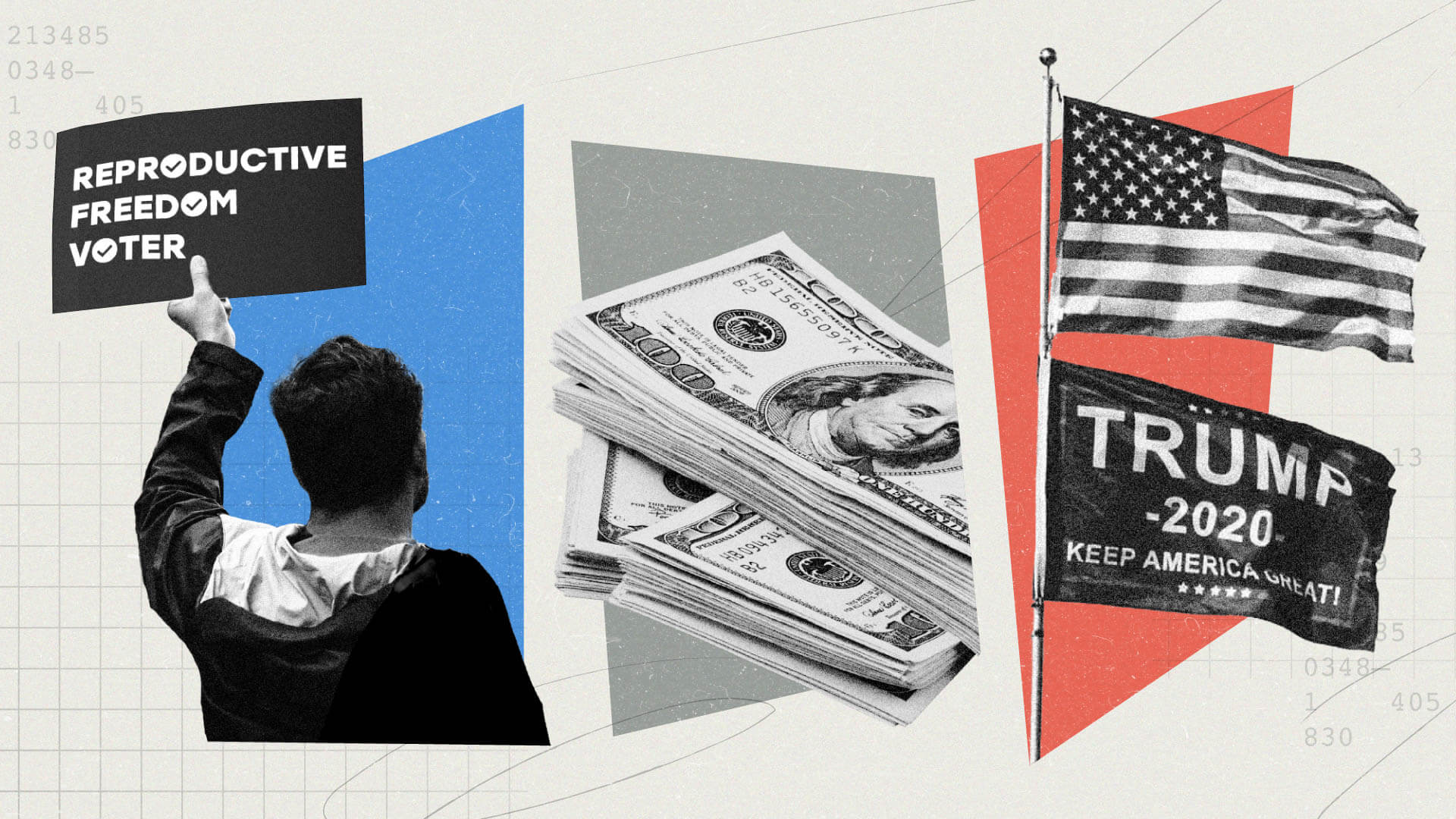
Key Takeaways
While the overall electorate was mostly unmoved, economic messages appeared to help Democrats with swing voters the most — though relatively few were prepared to commit to voting for them.
Democrats’ most convincing message on abortion focused on “women's privacy and freedom to make their own decisions,” while the GOP’s best argument claimed inflation is “hurting families at the grocery store and the gas pump.”
Messages that appeal to negative views of the opposing party left Democrats unscathed with swing voters, but the GOP’s reputation took a hit.
The 2022 midterm cycle has already broken a record for advertising spending from candidates and their allies looking to sway voters about the fate of control of Washington for the second half of President Joe Biden’s term.
With more money set to be dropped in the final weeks of the campaign, new Morning Consult research suggests that many messages gracing the airwaves do little to move even the more persuadable Americans to support a particular party at the ballot box next month, with many swing voters still undecided.
The research, conducted across three surveys in late September, focused on dozens of messages reflected in campaign advertising on three main areas: the economy, abortion and miscellaneous attacks designed to appeal to antipathy toward a particular party, politician or ideological movement.
Respondents were first asked a slate of questions, including whom they planned to vote for next month and how they view the two major parties. Then they were shown campaign commercial clips and a written list of messages that are being used to try to sway voters. After seeing and hearing the Democratic and Republican arguments, voters were again asked the initial list of questions to gauge which messages were more or less effective.
In each of the issue-oriented surveys, there was only marginal movement in vote choice among the broader electorate and swing voters — respondents who were not “definitely” committed to voting for a Democrat or Republican — after viewing and reading the messages.
Abortion Campaign Ad Messages Move Fewer Swing Voters Than Economic Ones
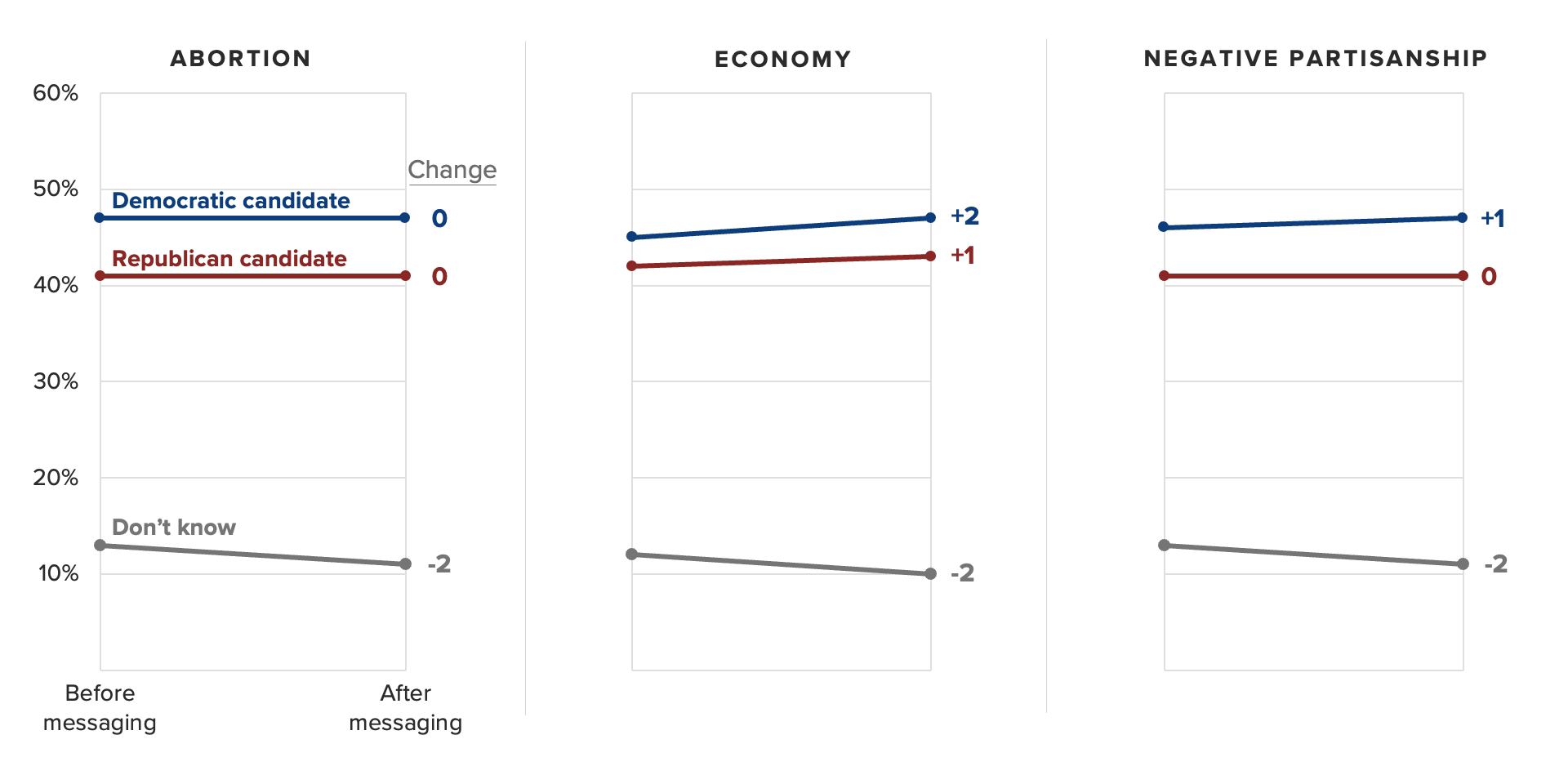
Surveys conducted Sept. 23-28, 2022, among representative samples of at least 2,005 registered voters, with unweighted margins of error of +/-2 percentage points.
However, economic-focused arguments from the Democratic side of the aisle resonated most with swing voters, though the bulk of that cohort — who make up roughly 3 in 10 voters — remained undecided in a follow-up test.
Midterm messages that are and aren’t convincing to swing voters
Surveys suggest a tight battle for control of Congress, with both sides eager to vote this fall. For campaign operatives, it highlights the importance of reaching a small segment of undecided voters, and the fresh research reveals the kind of messages those voters are inclined to believe this fall — as well as those they’re spurning — as the final weeks of campaign ads reach their screens.
On the economy, while Democrats have some salient messages, Republicans have the most credible claim in the minds of swing voters: More than 3 in 5 say the argument that “the cost of living has soared under Biden's watch, hurting families at the grocery store and the gas pump” is at least somewhat convincing in persuading them to vote for a Republican for Congress. With inflation at 40-year highs for more than a year, it’s an undeniable reality for Americans, and one that Republicans have hammered on for months.
GOP's Inflation Attack Is the Strongest Among Economic Campaign Messages
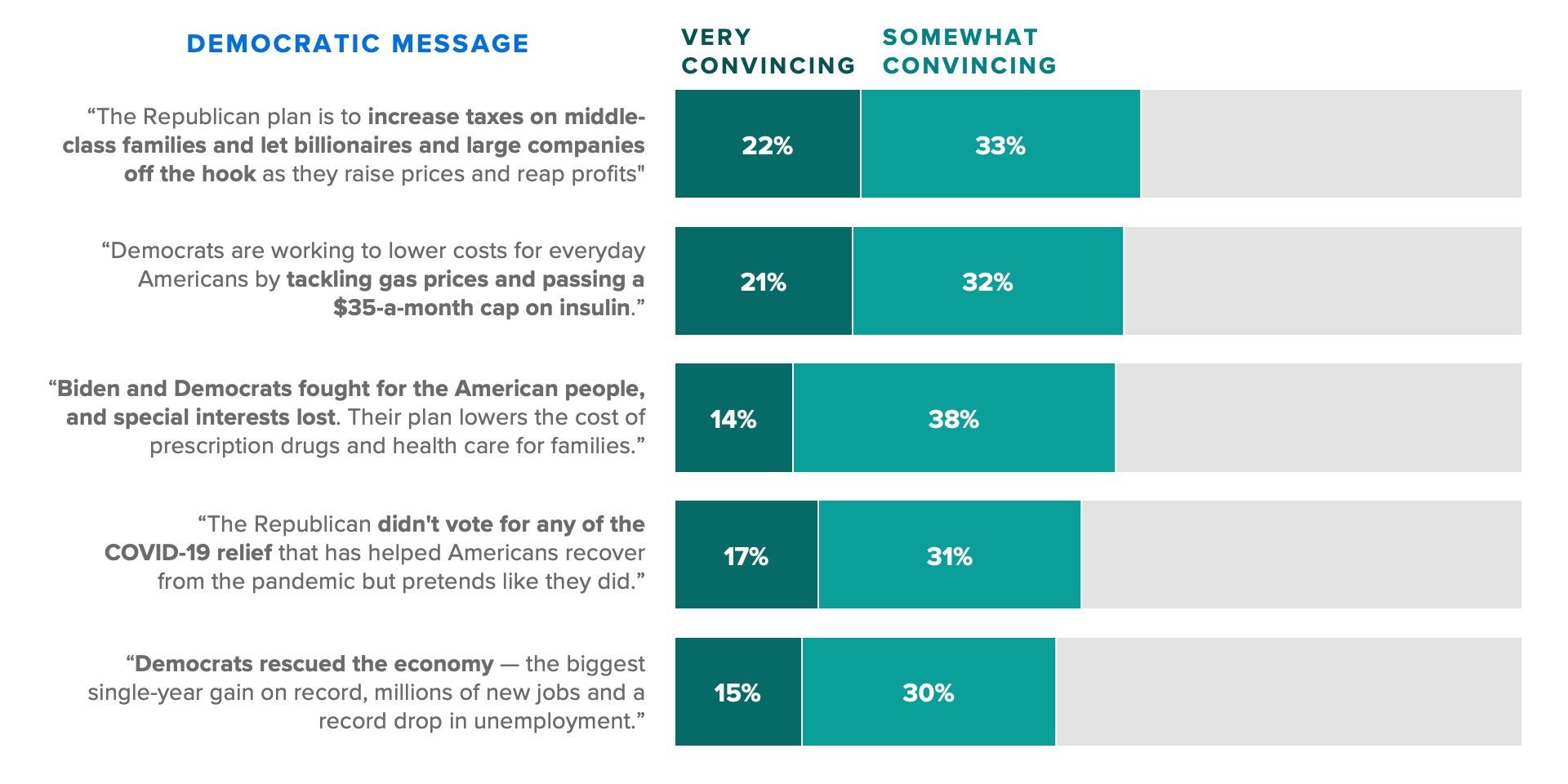
Survey conducted Sept. 27-28, 2022, among 560 registered voters who weren’t sure how they will vote in November, with an unweighted margin of error of +/-4 percentage points.
But swing voters may also be weighing arguments on the other side of the aisle, where Democrats’ most persuasive argument pertains to views about the GOP’s posture toward the rich. A majority of swing voters said that hearing “the Republican plan is to increase taxes on middle-class families and let billionaires and large companies off the hook as they raise prices and reap profits at record amounts” is a convincing reason to back a Democratic candidate, aligning with a message that’s been deployed by Biden himself.
Compared with the economy, the president’s party is generally acting on more compelling turf when it speaks about abortion. The issue, which is far lower than the economy on voters’ list of top concerns, has featured prominently in Democratic campaign ads as the election has neared, according to Bully Pulpit Interactive data reviewed this month by Axios.
Democrats' Nod to 'Privacy and Freedom' Is Most Convincing Among Abortion Campaign Messages
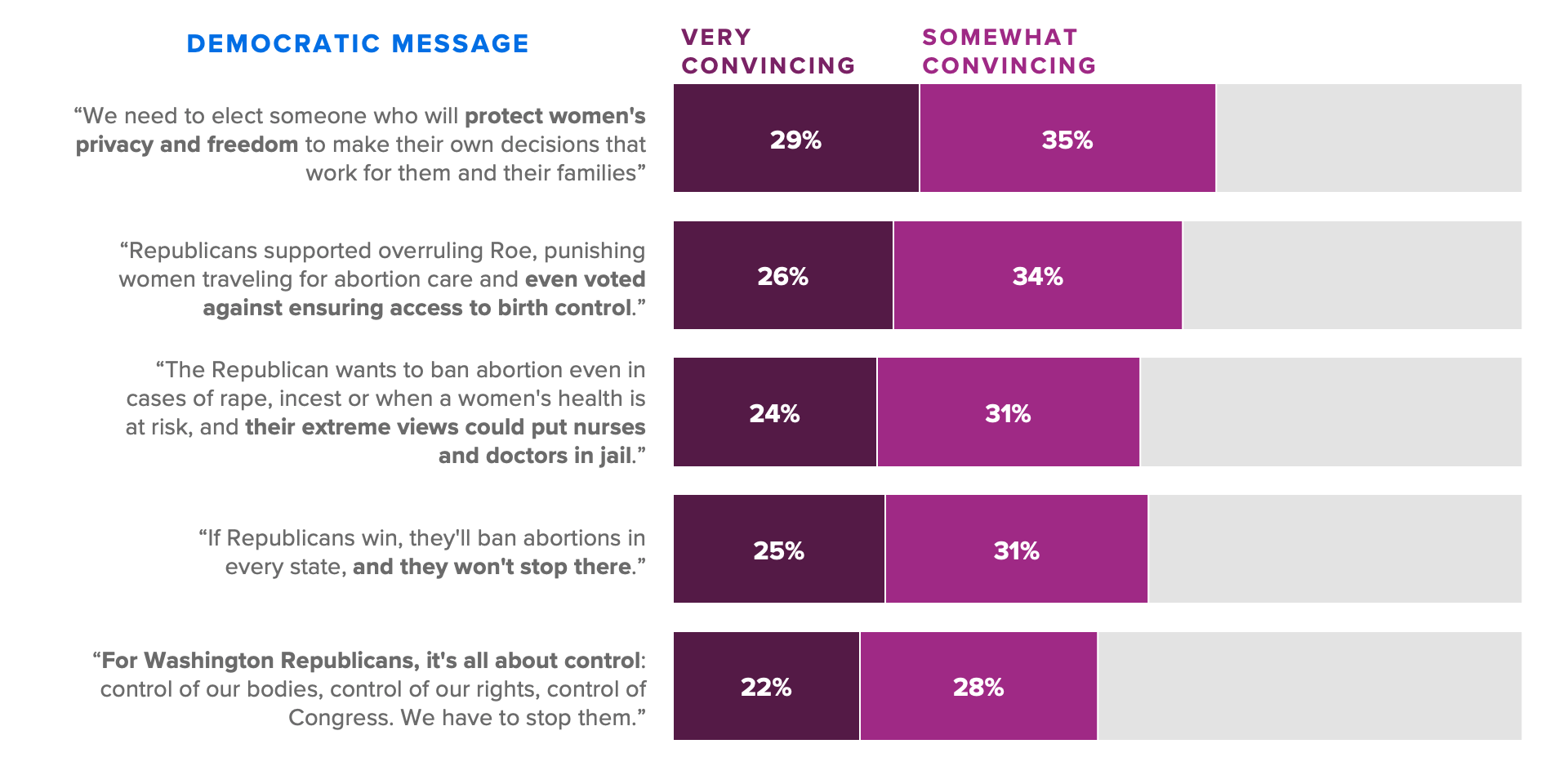
Survey conducted Sept. 23-24, 2022, among 617 registered voters who weren’t sure how they will vote in November, with an unweighted margin of error of +/-4 percentage points.
The most convincing abortion message to lure a swing voter to the Democrats’ side is a simple and positive statement affirming “women’s privacy and freedom to make their own decisions,” as used by Democratic Rep. Mary Peltola in Alaska. Swing voters find allegations that the GOP desires “control of our bodies,” as one House Majority PAC ad put it, less persuasive.
But swing voters aren’t turned off by Republican messaging on abortion, either. Compared with their response to the Democrats’ “freedom” message, voters who are uncertain about their 2022 vote are almost as sold by a GOP message straddling both sides of the issue, which argues, as New Mexico Republican gubernatorial nominee Mark Ronchetti put it, that “we can end late-term abortion while protecting access to contraception and health care.”
And then there are more miscellaneous messages, some of which have been more consistent in campaign messaging, such as attacks on Biden and “MAGA Republicans,” and others more targeted in specific types of contests.
Few Voters Find 'MAGA Republican' Attacks Very Convincing Reasons to Support a Democrat
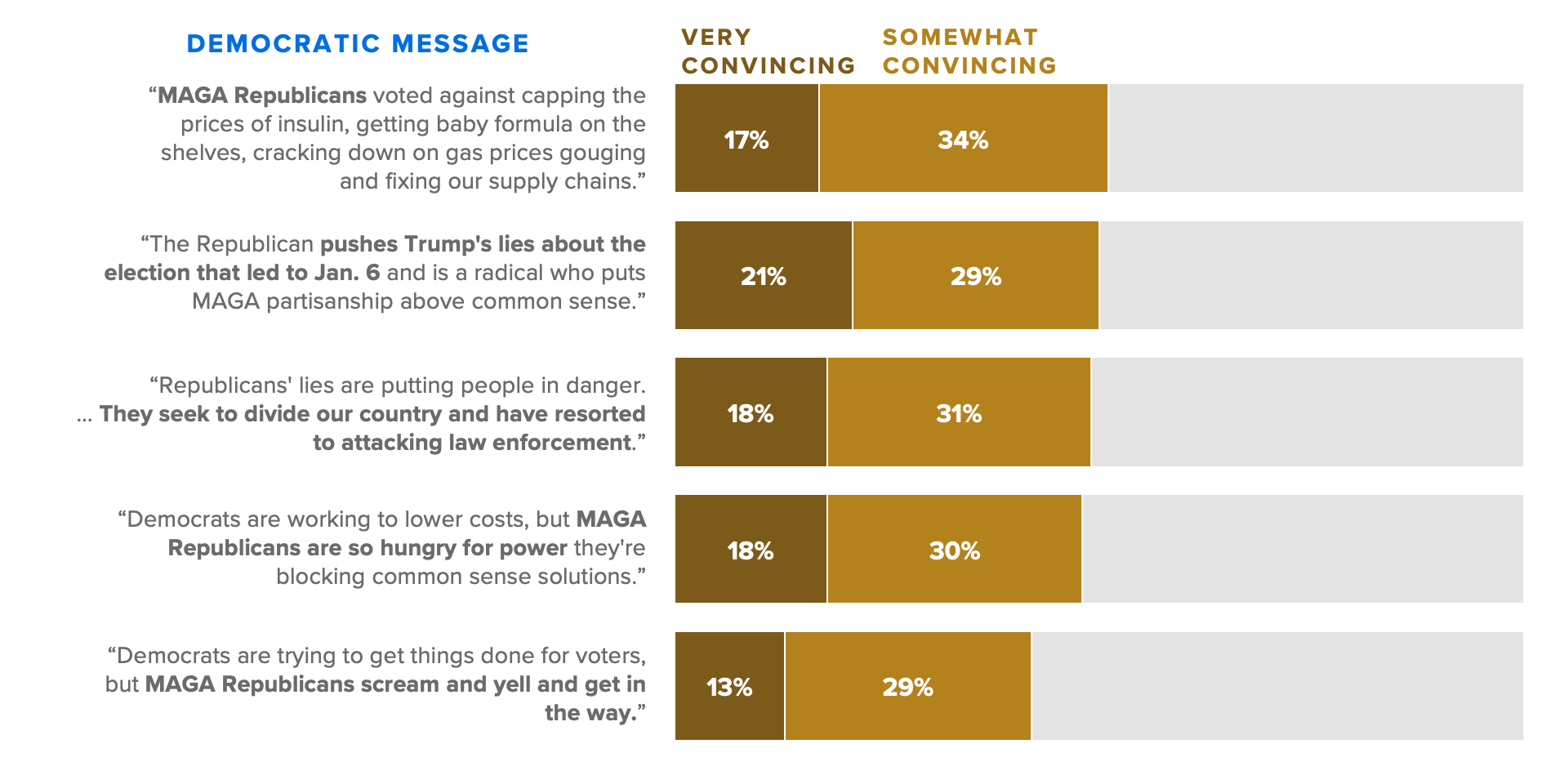
Survey conducted Sept. 24-25, 2022, among 590 registered voters who weren’t sure how they will vote in November, with an unweighted margin of error of +/-4 percentage points.
Democrats’ broader attacks on “MAGA Republicans,” popping up in a number of House races, do not appear particularly convincing, but Biden’s party might have better luck focusing on issues such as drug pricing and supply chain fixes.
On the Republican side of the aisle, widely used attacks on voting with Biden “100% of the time,” which applies to most of the Democratic caucus, do not appear to land well despite the president’s unpopularity. But jabs that accuse Democrats of supporting the “defund the police” movement, like one running in the Ohio Senate race, or forcing people who didn’t go to college to pay off college-educated Americans’ student loans, as put on air by the Republican American Action Network, appear to pack more of a punch.
How midterm messages are impacting voters’ views
Just because voters say they do not find something convincing as a reason to vote for a political candidate doesn’t mean it doesn’t impact their views. As the 2022 campaign is projected to near $10 billion in ad spending by its end, the surveys suggest that negative messaging has the potential to damage the GOP’s standing with swing voters.
Across the three surveys, swing voters started out more likely to hold negative views of Democratic Party, its lawmakers in Congress and the president who carries its mantle than the Republicans’ umbrella organization, federal legislators and standard-bearer, Donald Trump. Little changed for either party after hearing the abortion and economic messages, but things turned sour for the GOP’s various actors among respondents who heard the negative partisanship messages.
Partisan Framing Dings GOP With Swing Voters More Than Economic, Abortion Messages
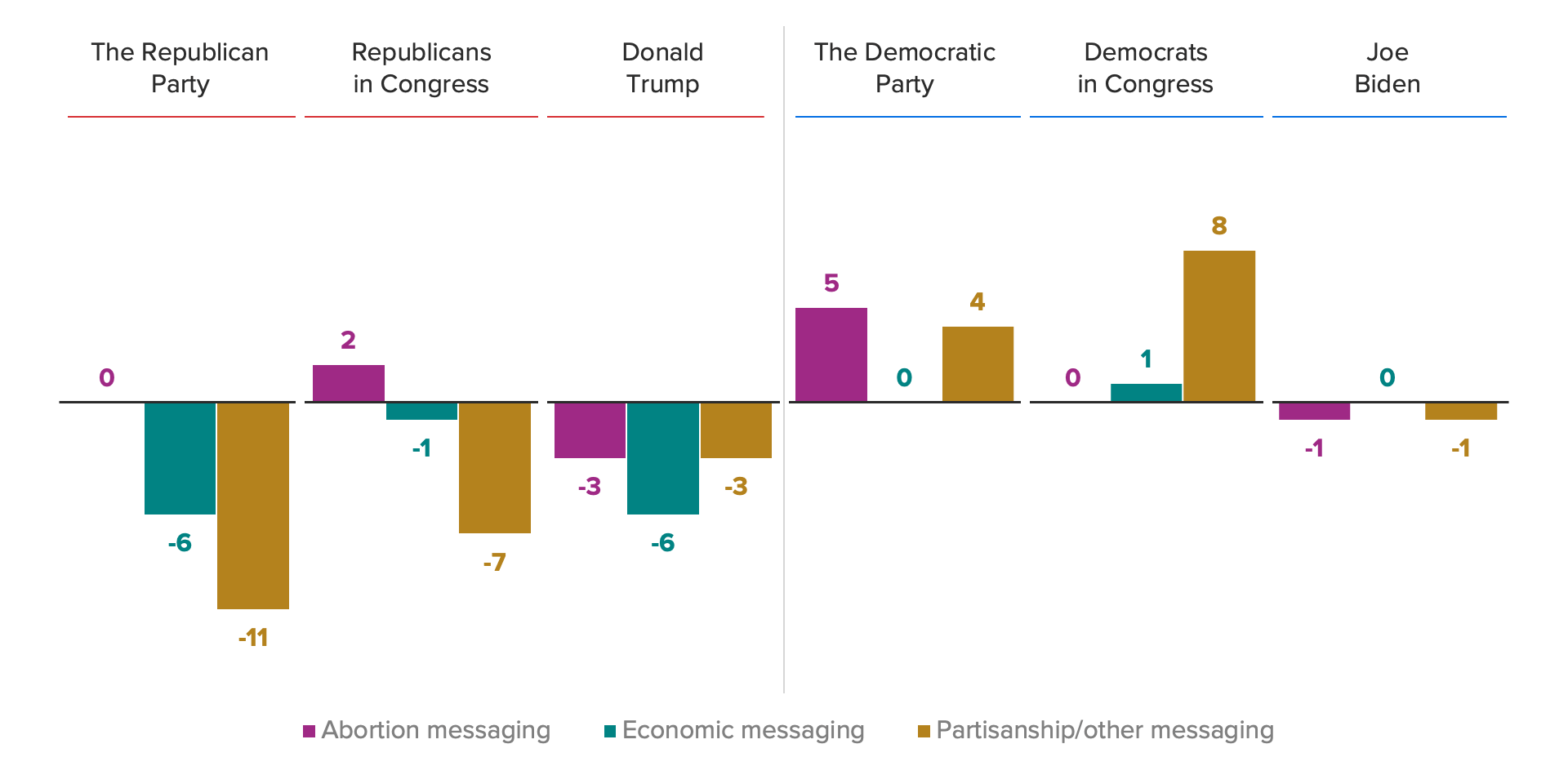
While Democrats held even or slightly improved, the negative partisan messages were especially weighty on the reputation of the Republican Party as a whole, increasing unfavorable views from 50% to 57%, with similar movement for Republicans in Congress.
Such messages also weighed on voters’ perceptions about the two parties’ ability to govern. The share of swing voters who said the Democratic Party is more capable of tackling the country’s big issues increased, from 13% to 21%, after hearing the broader partisan messaging, while the share who said the same of the Republican Party decreased, from 31% to 26%. A similar share moved on the Democratic side in response to the economic messaging.
Regardless of the mark these dueling messages leave in swing voters’ minds, whether this portion of the U.S. population actually casts ballots this year is still up in the air.
In an average of each of the three surveys, less than half of voters whose minds seem swayable say they will “definitely” vote this fall, compared with roughly 3 in 4 of those who say they’re sure to back the Democrat and 4 in 5 of those definitely backing the Republican.
The surveys were conducted Sept. 23-24, 2022 (abortion), Sept. 24-25, 2022 (negative partisanship) and Sept. 27-28, 2022 (the economy), among representative samples of 2,005 registered voters, with unweighted margins of error of plus or minus 2 percentage points.
Eli Yokley is Morning Consult’s U.S. politics analyst. Eli joined Morning Consult in 2016 from Roll Call, where he reported on House and Senate campaigns after five years of covering state-level politics in the Show Me State while studying at the University of Missouri in Columbia, including contributions to The New York Times, Politico and The Daily Beast. Follow him on Twitter @eyokley. Interested in connecting with Eli to discuss his analysis or for a media engagement or speaking opportunity? Email [email protected].